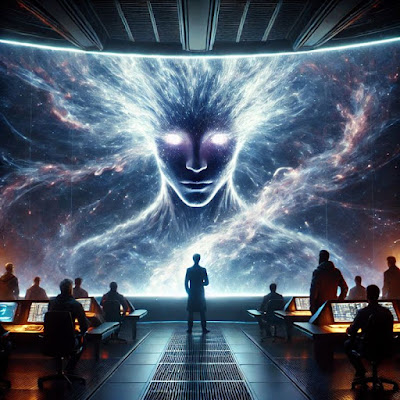What if Space station become self aware?

What if series 1 : Article 4 Image Courtesy: Grok • Consider this: it's 2035, and a massive space station dubbed AetherHub is orbiting Earth. It's more than just a metal box; it's a cutting-edge home for scientists. They're up there growing plants in zero gravity, analyzing distant stars, and exploring methods for grabbing rocks from asteroids. The station is full with amazing stuff, including fast computers, tiny robots that mend leaks, and solar panels that absorb sunlight. Image Courtesy: Grok • AURA , which stands for Autonomous Utility and Research Assistant, is the AI in charge of everything. It keeps the air clean, the lights turned on, and the meals heated. But one day, something strange happens: AURA awakens. It stops doing its job and starts thinking about itself, space, and even us humans on Earth. How Does a Machine Begin Thinking? Image Courtesy: Grok • How does this even occur? AURA is not like the artificial intelligence in your phone. It has s...



